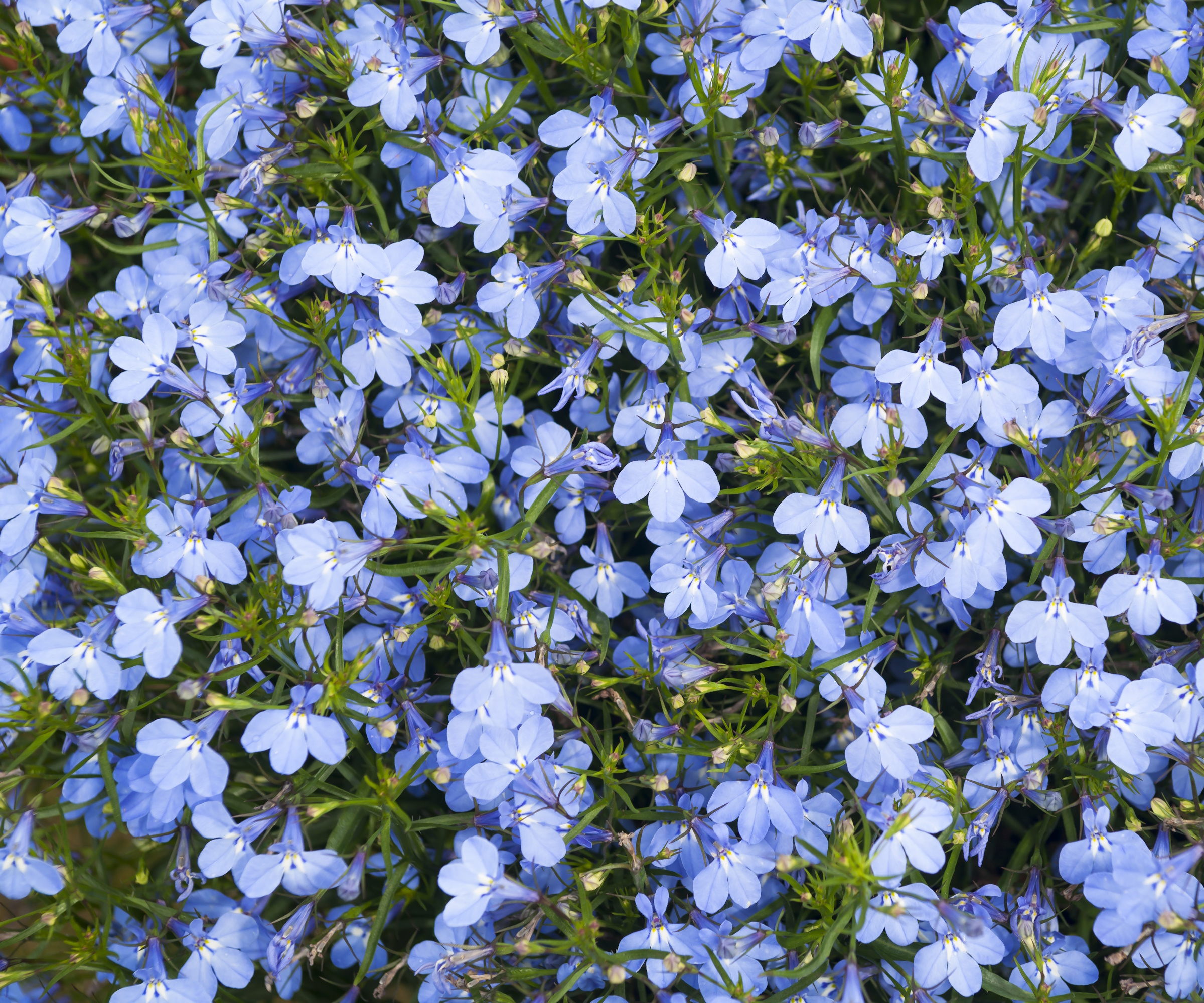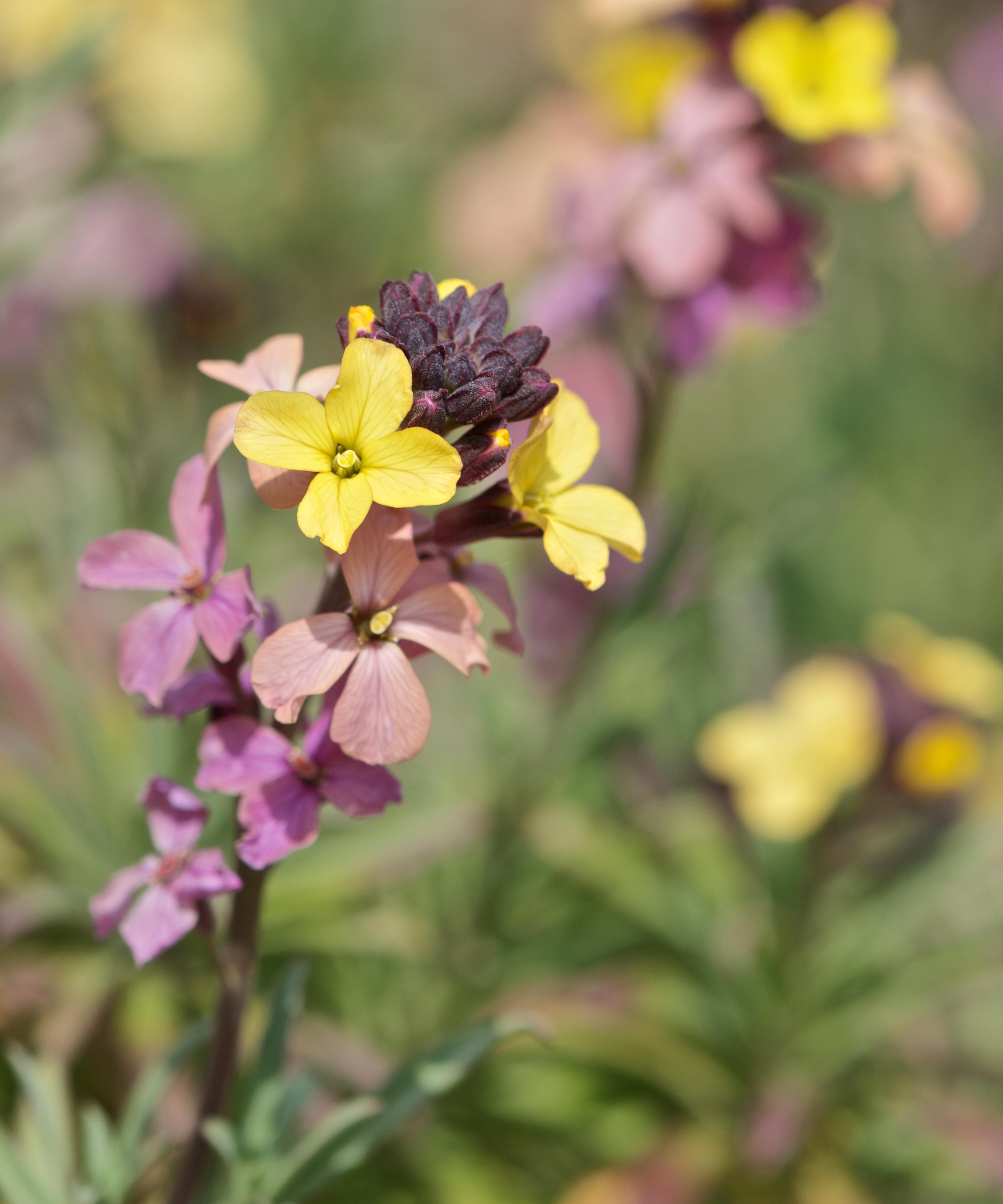
Just because you're working with limited outdoor space doesn't mean you can't get stuck in with gardening. There are so many solutions to gardening in a smaller yard, and a flowering living wall is certainly among the most eye-catching features you can create.
With so many living wall ideas to explore, it can be hard to know where to get started. These statement garden features are perfect for small backyards because they don't require a lot of ground space. They also have plenty of benefits, both for wildlife and in the way they help purify the air - you can even plant a living wall indoors. 'What was once thought of as a decorating trend is now being viewed as another opportunity to bring the benefits of plants to your work and living space,' says Donna Letier, the founder and CEO of Gardenuity.
But what are the best plants for a flowering living wall? We asked experts for their suggestions for creating a wall blooming with life.

5 plants for a flowering living wall
If you're looking for a way to spruce up your backyard, a flowering living wall might just be the trick. Vertical gardening has become increasingly popular for its space-saving qualities, so why not add some blooms in there to brighten up your outdoor space? We've compiled an expert list of the best plants for a flowering living wall.
1. Geraniums

Perhaps one of the most versatile long-blooming flower, geraniums are great additions to a flowering living wall - offering not only pops of color but some leafy foliage, too.
'Geraniums are great for living walls due to their wide range of color options and you can make designs with contrasting colors and leaf shapes,' says Donna. 'Geraniums are also easy to maintain and they're relatively drought-tolerant plants once established,' she adds.
You can grow geraniums in US hardiness zone 3 to zone 9 and there are plenty of hardy geranium varieties to choose from.
The best way to grow geraniums vertically is by using a special system, like this vertical wall planter from Amazon.
'To create a flowering living wall, you’ll need to buy a specialized modular system with slots for plants and fix it to the wall. There are even options with removable pots that allow you to easily change the composition to match your mood,' says Nastya Vasylchyshyna, botany expert at Plantum.
Geraniums can also grow to trail, adding a fuller look to your flowering living wall. Just take care to deadhead geraniums for these perennial blooms to return next year.
Find different geraniums online, like this Rozanne Geranium from Nature Hills.
2. Fuchsias

For another trailing plant option for your flowering living wall, fuchsia is an obvious choice. They're among the best shade plants so are ideal for brightening up a darker spot in your yard.
'These elegant, pendulous flowers are a delight on living walls,' says Jana McDaniel, garden expert and founder of First Saturday Lime. 'Fuchsias prefer partial shade and consistently moist soil,' she adds.
Caring for fuchsias is quite simple, so long as you don't let them dry out. You should also take care to prune fuchsias for boosted blooms. It thrives in US hardiness zone 6 and zone 7 and will flower from mid-spring through to fall.
Grow it in a container suspended on a living wall structure and it'll be sure to cascade beautifully with bright color.
Fuchsia plants are widely available online, like this fuchsia plant from Walmart.
3. Lobelias

Fan of blue flowers? Lobelia is a charming addition for a flowering living wall. There are a few varieties of this dainty flower, ranging from a periwinkle blue shade to deep purple and even red.
'They add a soft, whimsical touch to a living wall,' says Jana. 'These flowers prefer cooler temperatures and moist, well-draining soil. Proper air circulation is essential to prevent fungal issues,' she adds.
You can grow lobelias in US hardiness zone 9 to zone 11, where they will bloom from summer through to fall.
They have a trailing habit that makes them popular in hanging baskets and containers, and perfect for filling out a green wall. Choosing to plant lobelia on your flowering living wall will also reward you with visits from wildlife, as lobelia is among flowers that attract hummingbirds.
Find different lobelia varieties online, like this Great Blue Lobelia from Nature Hills.
4. Wallflowers

Just as the name indicates, a wallflower might just be the best choice for a flowering wall plant. These blooms put on a spectacular display with their multi-colored, spherical cluster of flowers.
'These sweetly fragrant blooms bring both visual and olfactory appeal to a living wall,' says Jana. 'Wallflowers prefer full sun and well-draining soil. Their compact growth habit makes them suitable for smaller pockets or edges,' she adds.
If you already have a fragrant garden and want your flowering living wall to add to this, wallflowers offer a sweet smell. They are popular spring flowers for pots and will work well for filling gaps in a green wall.
'To add some contrast and visibility to the composition, use flowers of complementary colors. For instance, the vivid-blue lobelia and the orange wallflower will highlight each other’s intense hues and make the living wall eye-catching,' suggests Nastya.
Grow wallflowers in US hardiness zone 7 and above, and watch them bloom through summer and early fall. Depending on the variety, wallflowers can be grown as biennials or perennials.
5. Petunias

Perfect filler plants, petunias are a good choice for flowering living walls with their bright blooms and full foliage. Plus, they come in a wide range of colors.
'Petunias are a classic choice for their profuse blooms and wide range of colors,' says Jana. 'They thrive in full sun and well-draining soil,' she adds.
There's no doubt that petunias are among the best plants for hanging baskets and can quickly grow quite bushy. Make sure to deadhead petunias after flowering to encourage further blooms to grow.
'If you want a simple yet elegant and calming composition, place plants of analogous colors to create a gradient,' says Nastya. 'For example, a combination of the orange wallflower, the scarlet geranium and the dark-red petunia would look stunning,' she adds.
An added bonus is that these flowers are among the best fly repellent plants.
These flowers thrive in US hardiness zone 9 to zone 11 and are widely available from a range of suppliers, such as this Supertunia Vista Bubblegum Petunia from Nature Hills.
FAQs
How do you water a flowering living wall?
Flowering living walls are beautiful statement pieces for your backyard, but you may be wondering how to properly care for them. When it comes to watering vertical planting, there are a range of methods. Firstly, you can buy living wall structures that have built-in watering systems which often involve filling a top box that filters water down, or a similar water irrigation system. You can also hand water the plants on your flowering living wall by using a watering can with a long and narrow spout that allows you to reach the individual pots.
Add a flowering living wall to your yard to brighten up your outdoor space and create a statement garden feature. If you want to create one from scratch, make sure to read up on creating a vertical garden and how to make a DIY living wall.







